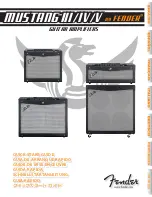
and together with Equ. 1
Y
m
ref
=
∑
k
=
0
∞
Y
k
X
0
X
1
k
k !
K
m
k
with
K
m
k
=
1
∫
−/
2
/
2
cos
k
ref
t
e
−
i m
ref
t
dt
.
The factors K
m
k
get zero for k to infinity. For small k, the K
m
k
remain too big to be neglected. In
order to neglect n-th order parts, the n-th derivative of Y(t) to X(t) has to be negligible.
The first 10 (k = 1 ... 10) coefficients K
m
k
for the first 4 harmonics m = 1 ... 4 are given in the
following table:
k =
m
1
2
3
4
5
6
7
8
9
10
1
1
2
3
8
5
16
35
128
63
256
2
1
4
1
4
15
64
7
32
105
512
3
1
8
5
32
21
128
21
128
4
1
16
3
32
7
64
15
128
N
OISE
M
EASUREMENTS
Lock-in amplifiers are capable to measure noise. They detect a signal at a certain center frequency
ω
ref
with an equivalent noise bandwidth. For a Gaussian noise, the equivalent noise bandwidth of a
real low pass filter is the bandwidth which passes the same amount of noise as a perfect rectangular
filter with the equivalent noise band width.
The equivalent noise bandwidth of the eLockIn is determined by the time constant and the slope of
the used Butterworth filter. It is calculated by
B
n
=
∫
0
∞
1
1
2n
d
.
(4)
The normalized Butterworth filter noise bandwidths are:
Filter order
Bandwidth /
τ
1
1,570796
2
1,110721
4
1,026172
Manual Anfatec PCI-Lockin Amplifier AMU5.0 – Rev. 1.01
Page 12 (34)













































